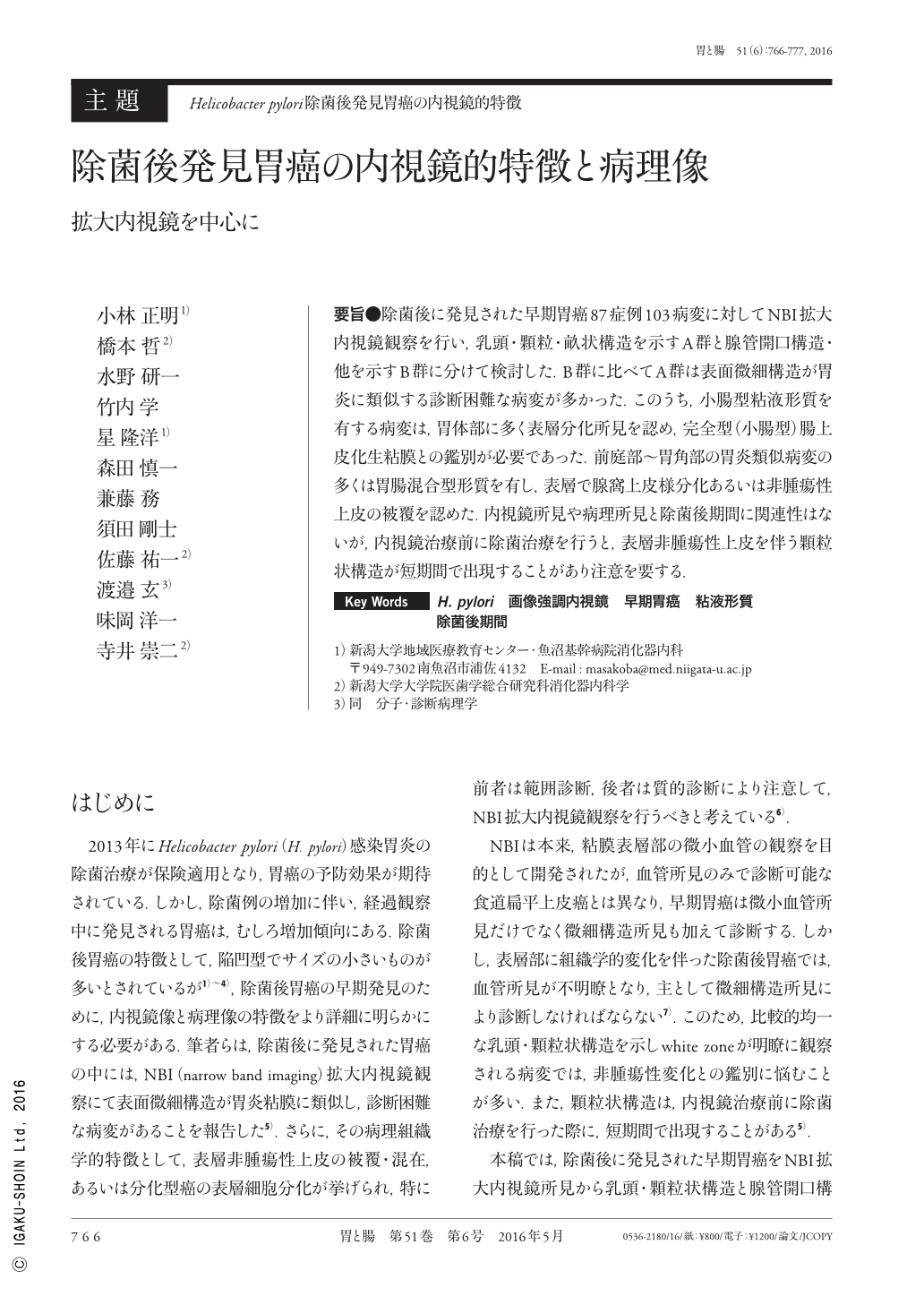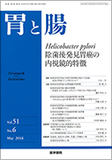Japanese
English
- 有料閲覧
- Abstract 文献概要
- 1ページ目 Look Inside
- 参考文献 Reference
- サイト内被引用 Cited by
要旨●除菌後に発見された早期胃癌87症例103病変に対してNBI拡大内視鏡観察を行い,乳頭・顆粒・畝状構造を示すA群と腺管開口構造・他を示すB群に分けて検討した.B群に比べてA群は表面微細構造が胃炎に類似する診断困難な病変が多かった.このうち,小腸型粘液形質を有する病変は,胃体部に多く表層分化所見を認め,完全型(小腸型)腸上皮化生粘膜との鑑別が必要であった.前庭部〜胃角部の胃炎類似病変の多くは胃腸混合型形質を有し,表層で腺窩上皮様分化あるいは非腫瘍性上皮の被覆を認めた.内視鏡所見や病理所見と除菌後期間に関連性はないが,内視鏡治療前に除菌治療を行うと,表層非腫瘍性上皮を伴う顆粒状構造が短期間で出現することがあり注意を要する.
We evaluated 103 early gastric cancers detected in 87 patients who received successful Helicobacter pylori eradication therapy. Using NBI-ME(narrow band imaging with magnifying endoscopy)we classified the gastric cancers into two types of microstructures:papillae and pits. Papillae were more difficult to identify than pits as they often had a gastritis-like appearance, showing regular microstructure bordered by a clear white zone, and resembling the adjacent noncancerous mucosa. The cancers with a small intestinal phenotype were frequently located in the gastric body, and were positive for CD10 immunostaining and surface cellular differentiation. Such cancers need to be distinguished from complete intestinal metaplasia. Most cancers located in the antrum or gastric angle had a gastro-intestinal phenotype, revealing histological surface differentiation or non-neoplastic superficial epithelia. Endoscopic and pathological findings were not related to the duration following the eradication of H. pylori. We should be cautious of short-term changes seen on NBI-ME, manifesting as papillary microstructures when eradication therapy has been performed prior to endoscopic resection.

Copyright © 2016, Igaku-Shoin Ltd. All rights reserved.


